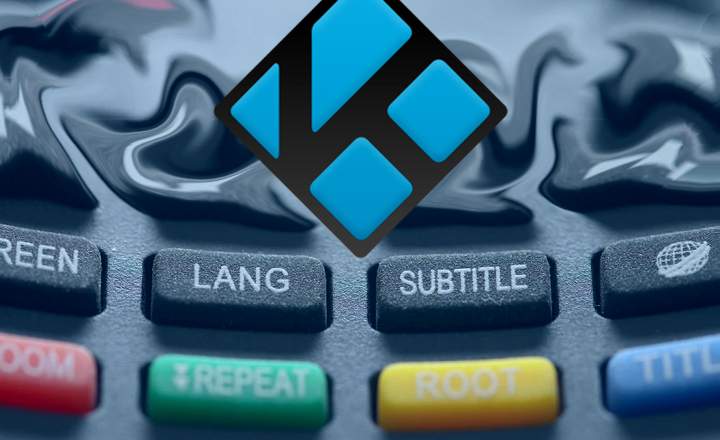
Unless we are occasional users and only use the mobile to navigate, call or chat, we have surely heard about Android partitions. Terms like “/ boot”, “/data"Or"/ system"Refer to different partitions or" drawers "within the" big closet "that is the operating system of Android phones and devices.
But let's not rush. Are we really clear what a partition is? Surely more than once we have heard that "Android uses a file system very similar to Linux” …
What is a partition?
Android operating system use multiple partitions to organize different files and folders containing a device. Each of these partitions or compartments meets a unique and distinctive role within the operation of the terminal.
In this way, if we erroneously delete or alter any of these compartments, we can compromise the integrity of the system. You have to be very careful!
Imagine that we open all the drawers of this big closet that is Android, and we put the shirts in the drawer of the socks, and we move the pants to the drawer of the underwear. In the end we would not know where everything is and we would go out half naked on the street! What a stick.
 For the system to work, you have to have everything well organized, with everything in its place.
For the system to work, you have to have everything well organized, with everything in its place.Memory partitions in Android: types and functions
These are the partitions that we can usually find on any Android phone or tablet.

- / boot: This is the partition used for start up the phone. Inside the kernel and ramdisk are stored. Without this partition the device simply could not boot. Many bricked phones are due to boot partition errors. Usually derived from failed rooting attempts and system modifications.
- / system: As the name suggests, this is where they are saved all files related to the operation of the operating system (except for the kernel and ramdisk). This is where the applications that come pre-installed as standard are stored, as well as the Android user interface.
- / recovery: The recovery partition is an alternate boot partition. Instead of loading the operating system as such, in the recovery we can access an administration console. From it, we can send updates through ADB commands, do a factory reset, clear the cache, etc. We can more detailed information about Android recovery in this other POST.

- /data: This is the partition where they are saved all user data. That is, all our contacts, messages, settings and applications that we install on the device. Be careful: this is not where our photos, music, etc. are stored. If we erase the / data partition, we will basically be doing a total reset, leaving the device in factory state.
- / storage: Here yes, it is where we will find our personal documents, such as images, downloads, videos, and so on. It is also used to store information about the applications we install. This is the content we see when we install a file manager on our phone. The / storage partition is used both for the internal memory of the device, as well as for the micro SD card or any other memory connected by OTG.
- /cache: This is where they are stored the temporary system files that we use on a recurring basis. We can erase the contents of this partition without fear of losing any personal document, but as we use the phone it will fill up again.
- / misc: In the miscellany partition are mainly saved data from our telephone operator (CID), region settings and some hardware configurations. It is a really important partition: if it is corrupt or a file is missing, the device will not function normally.
Basically these are all the partitions that we can find inside the internal memory. But then there are the partitions that correspond to the SD card. We do not forget those either:
- / sdcard: As its name suggests, this is the main partition of the micro SD card of the device (although, curiosities of life, sometimes it is also used within the internal memory of the terminal). This is where we can keep our files, photos, videos, music and all kinds of personal documents. Some phones or tablets that have internal and external SD, also show other similar partitions: / sdcard / sd or / sdcard2. In essence, they all correspond to the same and have the same function.
- / sd-ext: This partition is mainly used in Custom ROMs. It is something like the / data partition on a micro SD card on which an Android ROM has been installed. It can be very useful on devices with little internal memory.
Tools to manage partitions and their content
Now that we know a little more in depth what each of the partitions that make up the Android operating system are for, we may want to get a little more in the flour.

File managers
The easiest way to navigate through the most accessible and commonly used files, that is, those located on partitions / storage and / sdcard, is to use a file manager. Android has a lot of free managers on Google Play, being “ES File Explorer”, “STAR" and "File manager”Some of the most popular apps.

 Download QR-Code File Manager Developer: File Manager Plus Price: Free
Download QR-Code File Manager Developer: File Manager Plus Price: Free Flashing tools
If we are thinking of installing a custom ROM or a factory image, then we will have to play with other types of partitions, such as / boot and / recovery. Each mobile has its corresponding tool to "flash" or modify this type of partitions. For example, if we have a phone with a Mediatek processor, we will use the program SP Flash Tool. The Samsung use Odin, etc.
ADB and fastboot commands
One of the great advantages of using Android is the ADB and fastboot commands that we can execute connecting the phone to a PC. For example, with the command «adb reboot-recovery »we can order the device to reboot and load the / recovery partition.
The fastboot commands, meanwhile, are "more powerful" at certain times, since they allow us to format partitions ("format ”), Until the kernel boots, even with the phone off.
If you are interested in this topic and want to know more, visit the Basic ADB command guide and the Fastboot Practical Use Guide. They are quite self-explanatory and help to understand these types of tools a little better.
You have Telegram installed? Receive the best post of each day on our channel. Or if you prefer, find out everything from our Facebook page.
